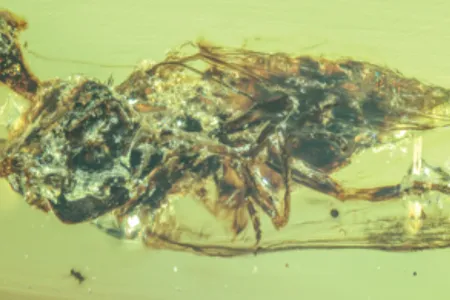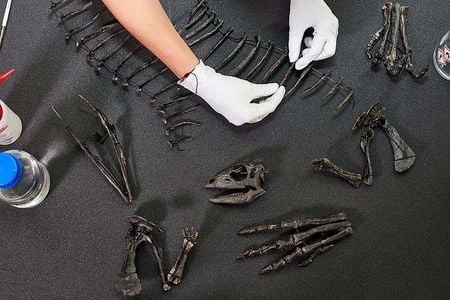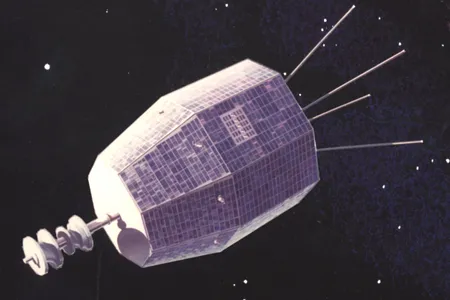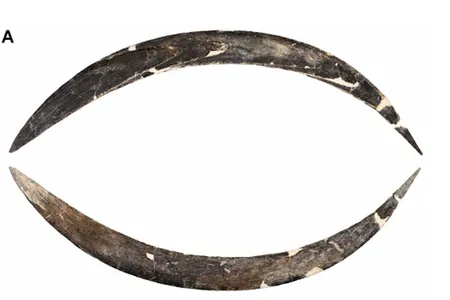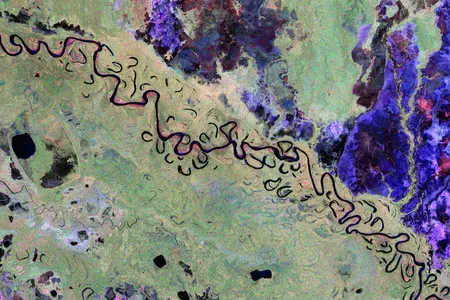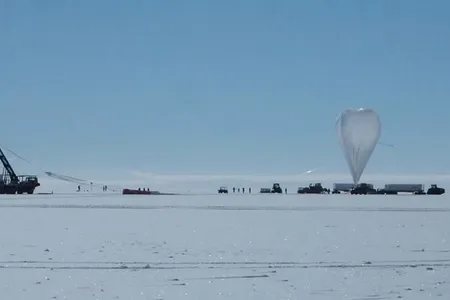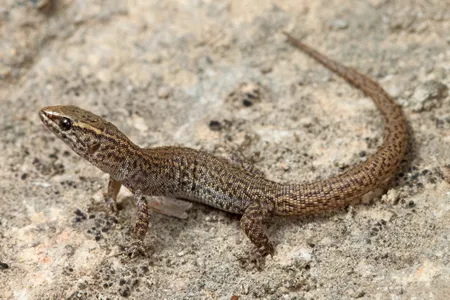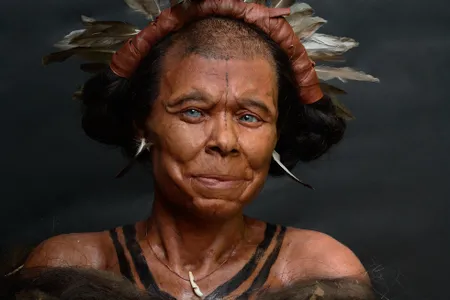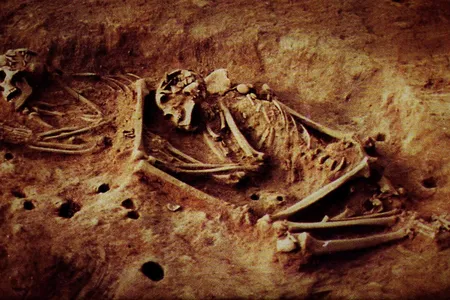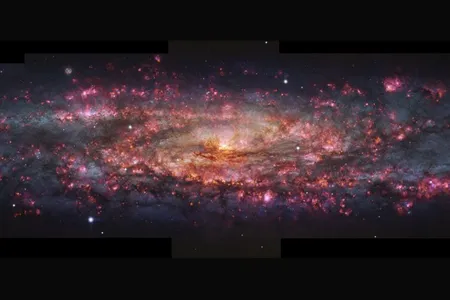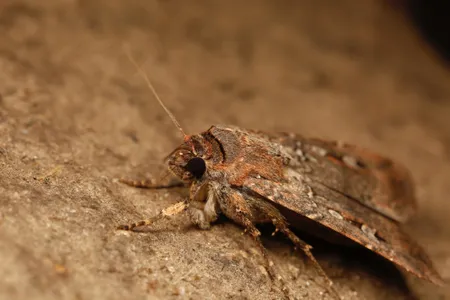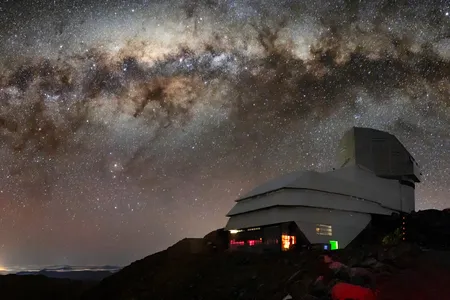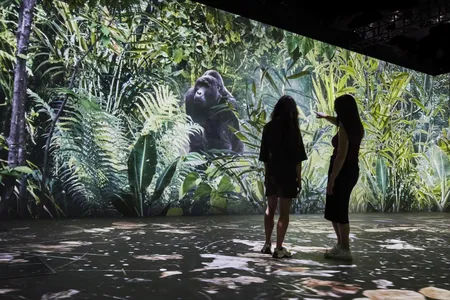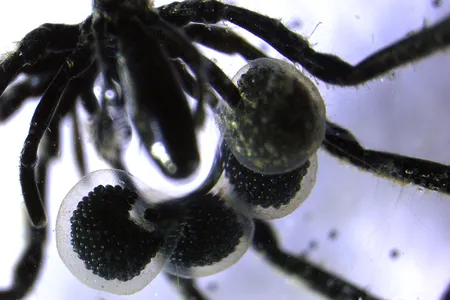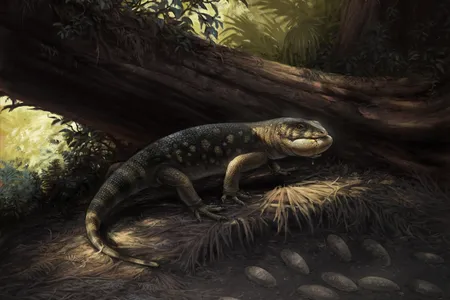Rare Amber Fossils Capture ‘Zombie’ Fungus Infecting Insects During a Time When Dinosaurs Still Walked the Earth
An ant and fly from the Cretaceous period offer insights into the history of Ophiocordyceps, the fungal parasite made popular by HBO’s “The Last of Us”
‘Enigmatic’ Dog-Sized Dinosaur Reveals a New Species That Scampered Around Jurassic North America
The speedy, plant-eating creature lived in what is now Colorado roughly 150 million years ago, and its skeleton went on display in London this week
Astronomers Detected a Mysterious Radio Burst. It Turned Out to Be From a Dead NASA Satellite
The signal detected last year came from Relay 2, a communications satellite that has been defunct since 1967
The James Webb Space Telescope Reveals Its First Direct Image Discovery of an Exoplanet
Researchers identified the likely planetary candidate’s infrared light after blocking out its host star’s overwhelming glare
The World’s Oldest Boomerang Is Even Older Than Scientists Thought, a New Analysis Suggests
Researchers revisited a crescent-shaped, mammoth tusk artifact discovered in Poland and estimated it’s around 40,000 years old
These Colorful Satellite Views Reveal Our Forests in Unprecedented Detail and Showcase the Potential of the New Biomass Mission
The European Space Agency’s satellite will measure trunks, branches and stems in forests to shed light on how much carbon is stored in trees across various continents
Mysterious Radio Pulses Found in Antarctica Seem to Defy Physics, and Researchers Are Trying to Trace Their Origins
Strange signals detected by a NASA instrument more than a decade ago have continued to confound scientists, but a new paper rules out cosmic neutrinos as a source
These Lizards Mysteriously Survived the Asteroid Strike That Killed the Dinosaurs—and Their Descendants Are Still Alive Today
Small and elusive night lizards probably persisted because they have slow metabolisms and like to hide out in rock crevices, a new study suggests
See the Face of a 10,500-Year-Old Woman, Reconstructed by Archaeologists and Artists
Using well-preserved ancient DNA, researchers have created a life-like facial reconstruction of a woman who lived in Belgium’s Meuse Valley during the Mesolithic period
Ancient DNA Reveals Mysterious New Group of Humans in Colombia With No Genetic Ties to People Today
The previously undocumented lineage of hunter-gatherers seems to have disappeared around 2,000 years ago
Climate Activist Throws Bright Pink Paint on Glass Covering Picasso Painting in Montreal
The stunt is part of an environmental organization’s efforts to draw attention to the dangerous wildfires spreading through Canada
Doctors Detected a Mysterious Antibody in a French Woman’s Body. It Turned Out to Be a Brand New Blood Type
Called “Gwada negative,” it marks the discovery of the 48th known blood group system in humans
See the First Breathtaking Images Captured by the Powerful New Telescope at the Rubin Observatory
Featuring never-before-seen views of galaxies and more than 2,100 newly discovered asteroids, the observations are only a taste of what to expect from the telescope’s upcoming decade-long survey
Iconic ‘Dragon Man’ Skull Offers First Glimpse of What a Denisovan’s Face Looked Like, New Genetic Studies Suggest
The mysterious ancient humans were only known from fossil fragments. Now, two papers argue a skull uncovered in China belongs to this group, after examining preserved DNA and proteins
Stunning New Image of the Sculptor Galaxy Captures the Cosmic Landscape in Thousands of Colors
The galaxy sits in a sweet spot that allows astronomers to study it in ways that can’t be applied to even our own Milky Way
Australian Moths Are the First Known Insects to Navigate by the Stars, Revealing a Migratory Superpower
Bogong moths use both Earth’s magnetic field and the starry night sky to make twice-yearly migrations spanning hundreds of miles, according to new research
The World’s Largest Camera Is About to Unveil Its First Photos of Space. Here’s How to Follow Along With a Live Stream
The revolutionary Vera C. Rubin Observatory will unveil new insights about our universe—and you can catch a first look at a local event or online on Monday
Explore the History of the Planet With David Attenborough at This New Immersive Experience in London
“Our Story With David Attenborough” at the Natural History Museum is a 50-minute program that explores humankind’s role in the planet’s ongoing story
Scientists Discover First Known Sea Spider Species That ‘Eat’ Methane With the Help of Bacteria
The research offers new insights on interactions between creatures on the mysterious seafloor and sheds light on the methane cycle
A Jar of Fossil Bones Long Stored at a Museum Led Scientists to Discover a Goblin-Like Lizard From 76 Million Years Ago
Fossils described in a new study speak to a previously unknown large-bodied lizard diversity that existed alongside dinosaurs
Page 4 of 500
